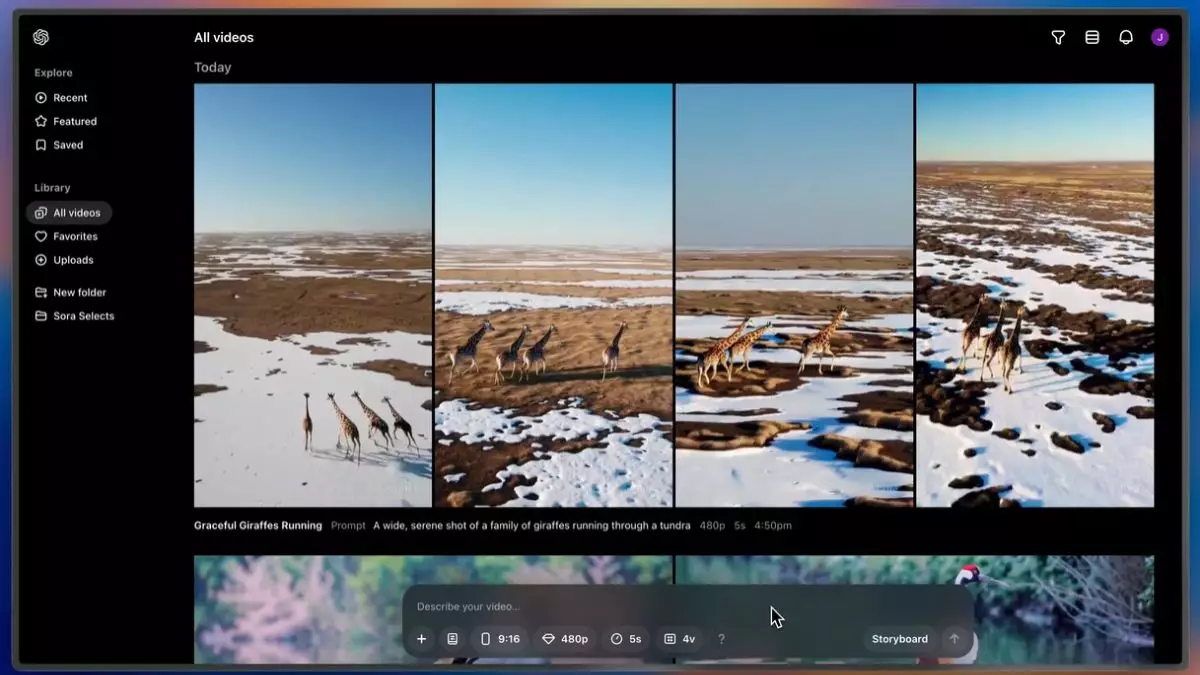OpenAI made headlines this week with the launch of its AI video generation model, Sora. Initially previewed in February to a select group of users, the model has evolved into a standalone platform, now featuring a variation called Sora Turbo. This innovative AI technology boasts the ability to produce videos at 1080p resolution, with each video having a maximum length of 20 seconds. As a testament to how far the technology has come, Sora has landed outside the confines of closed testing and is available for public use—albeit only to paid subscribers of ChatGPT.
In a comprehensive blog announcement, OpenAI detailed the milestones leading up to the product’s release. Although the model received some initial excitement, the numerous delays raised questions about its readiness and safety. OpenAI attributed these setbacks to efforts to enhance security and privacy protocols, reinforcing the notion that rapid development should not come at the risk of ethical considerations. After nine months of anticipation, the launch of Sora as a robust tool finally arrived, although it’s currently restricted to users with ChatGPT Plus and Pro subscriptions.
While the unique capabilities of Sora are enticing, access is not without its caveats. ChatGPT Plus users can generate up to 50 videos each month at a resolution of 480p or fewer at 720p. For those willing to invest more, the ChatGPT Pro subscription opens up greater possibilities at a hefty $200 per month. With the Pro subscription, users gain a tenfold increase in usage allowance, although specific limitations for higher resolution and longer duration videos remain vague.
The exclusivity surrounding Sora is both a boon and a barrier. It allows for an enhanced experience but creates a divide between users, further prompting discussions around accessibility and whether advanced AI tools should be accessible only to those who can afford them. OpenAI’s business model may be sustainable, but it does raise ethical questions regarding the democratization of technology.
Sora’s functionality extends beyond basic video generation. The platform allows users to upload their own media, including images and videos, to remix and enhance their content. Users can create videos from scratch with text prompts, incorporating an intuitive storyboard interface to meticulously set inputs for each frame. Such features signal a shift toward greater user empowerment in the creation of digital media—an increasingly valuable asset in today’s content-driven marketplace.
On the technical side, Sora operates as a diffusion model, which enables the AI to predict and maintain consistency across multiple frames in a video. Drawing inspiration from DALL-E 3, Sora utilizes transformer architecture, showcasing the layers of complexity embedded within these sophisticated models. OpenAI has invested significant effort into curating a diverse dataset for Sora. By partnering with companies like Shutterstock and Pond5, and commissioning proprietary datasets, OpenAI has bolstered the AI’s training foundation. This unique mix of public data and proprietary content aims to enhance the creativity and quality of the generated videos.
With great power comes great responsibility, a sentiment OpenAI appears to take seriously with Sora. In a world where AI-generated content can fuel misinformation or harmful narratives, the company is taking steps to minimize these risks. Visible watermarks and metadata will accompany generated content, adhering to the guidelines established by the Coalition for Content Provenance and Authenticity (C2PA).
Moreover, the platform is designed to prevent the generation of potentially damaging videos—particularly concerning child exploitation and deepfake materials. Such ethical boundaries are critical, reinforcing that while creativity is a core focus, safety and content integrity are paramount. As Sora is rolled out, these safeguards will be crucial to its long-term viability and acceptance in a rapidly evolving digital landscape.
As OpenAI enters a new chapter with Sora, the potential for innovation in video content generation seems limitless. Nonetheless, questions around accessibility, ethical usage, and safety are front and center. The AI landscape is ever-evolving, and with development comes the responsibility to ensure these technologies benefit society without inflicting harm. OpenAI’s commitment to ethical standards could ultimately define how Sora and similar technologies are viewed in the future, shaping the direction of AI applications across various domains.


Leave a Reply